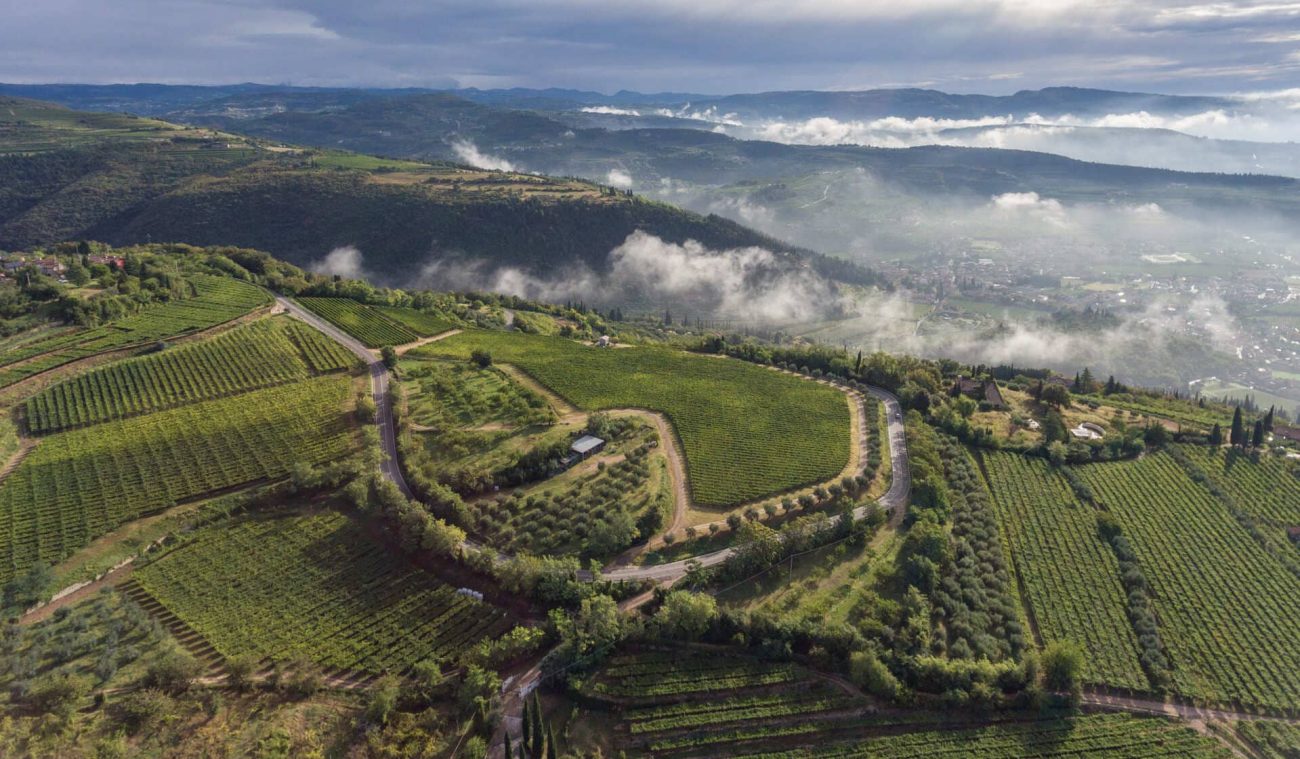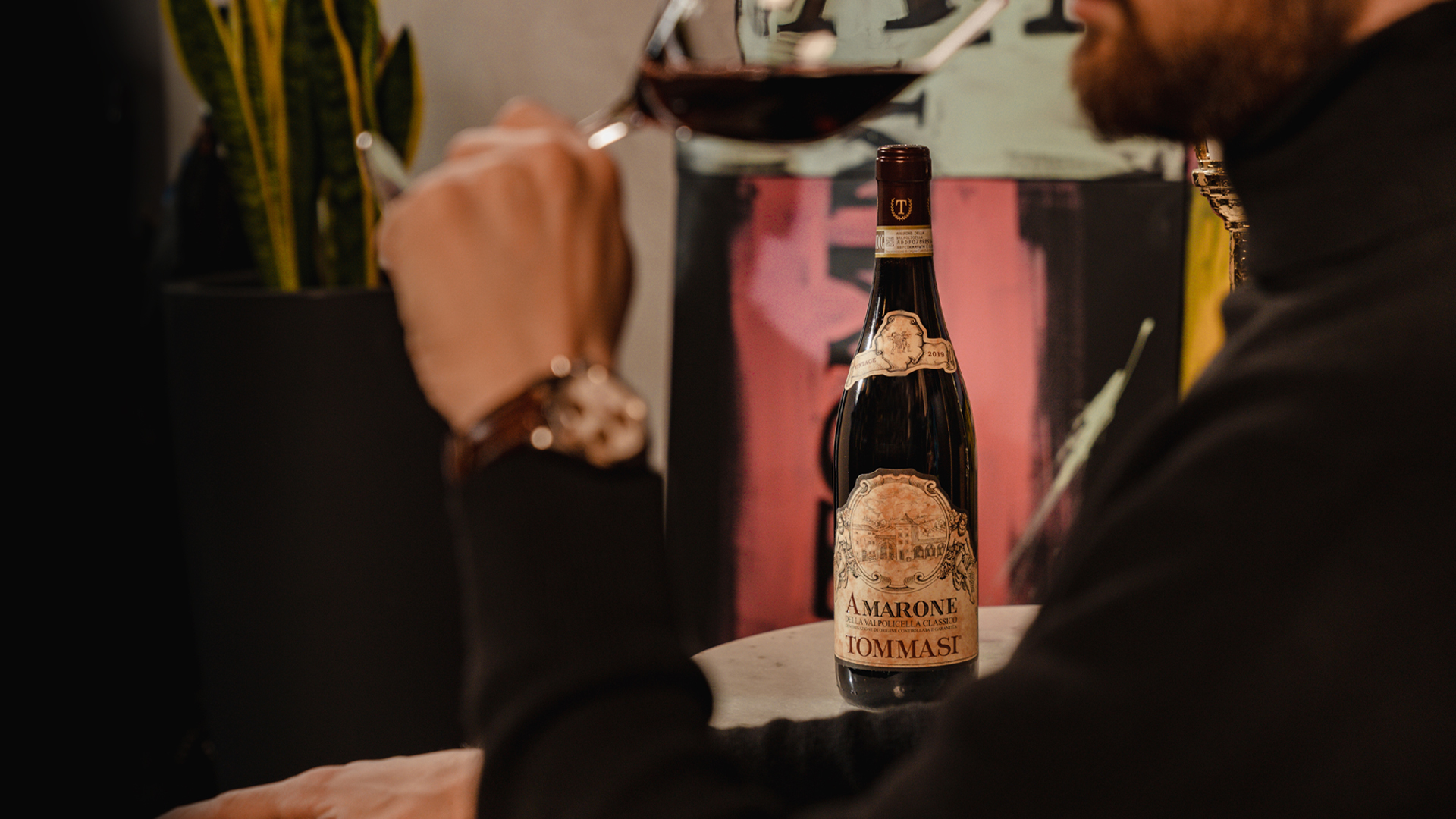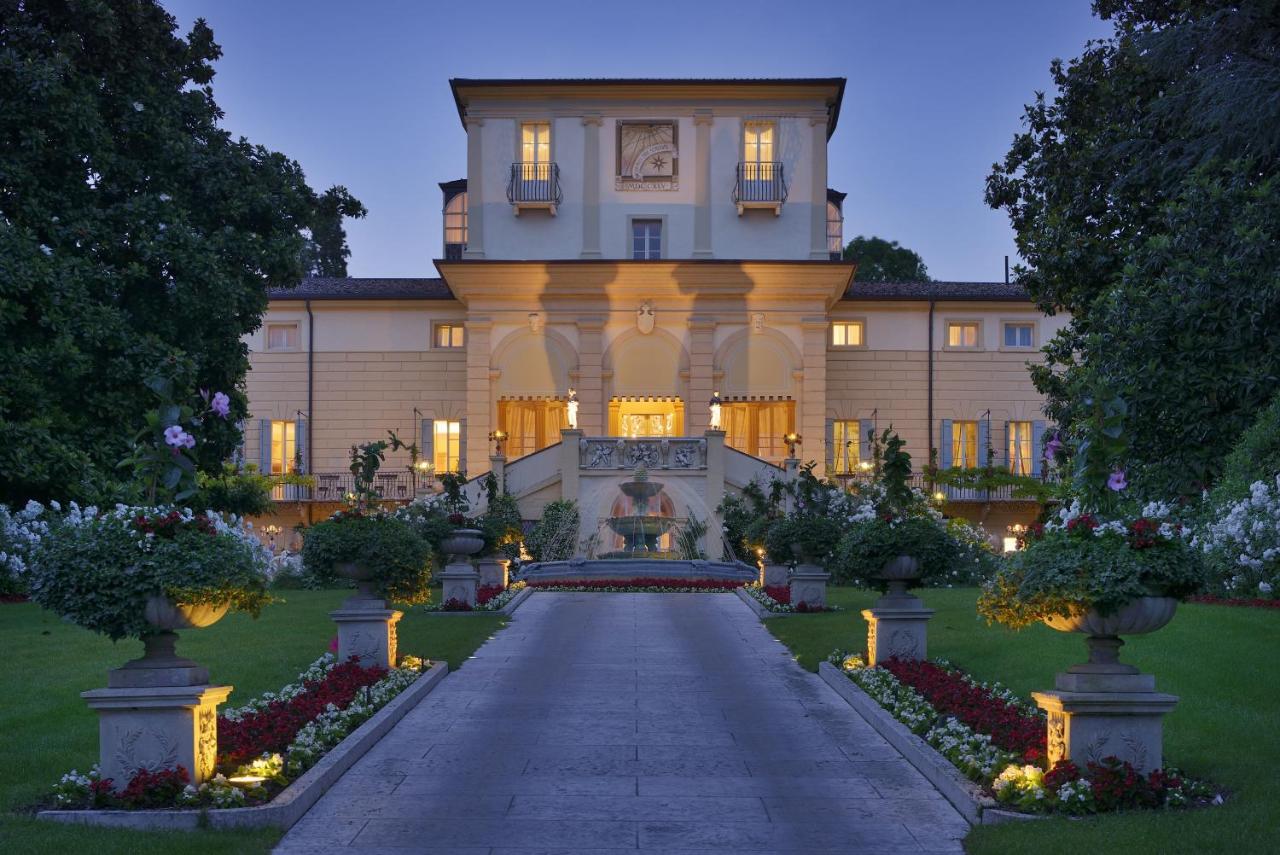Ultimate Guide To Italy’s Valpolicella Wine Region
Italy is synonymous with wine (and food! At least for us!), and if you're even remotely a wine enthusiast, the country feels like a never-ending blend of flavor, culture, and tradition. One of the gems

In this guide, we’ll take you through everything you need to know to make the most out of your trip to Valpolicella: where to stay, where to eat, what wineries to visit, and how to get the most out of your wine-tasting adventures. We’ll also cover the history, terroir, and winemaking techniques that make this region truly unique. Let’s dive in!
A Brief History of the Valpolicella Wine Region
Valpolicella is no newcomer to the wine scene. Winemaking here dates back to the Roman era, and the name “Valpolicella” is thought to come from Latin and Greek origins, meaning “valley of many cellars.” The Romans cherished this region for its wine, and it continued to be cultivated throughout the Middle Ages and Renaissance.
The area became particularly famous for its production of sweet wine called Recioto, from which Amarone was later derived. The Amarone story is a happy accident. Originally intended to be a sweet wine like Recioto, one particular batch fermented too much, resulting in the dry, rich, and powerful Amarone we know and love today.
In modern times, Valpolicella has maintained its traditional winemaking methods while incorporating innovation to meet global demand, making it one of Italy’s most prestigious wine-producing regions.
The Terroir of Valpolicella: Nature’s Gift to Winemaking
If you’re a bit of a wine geek like me, you’ll appreciate how important the concept of “terroir” is when it comes to making wine. Terroir refers to the environmental factors—soil, climate, topography—that affect the grapes. Valpolicella is blessed with a diverse terroir that is ideal for viticulture. The region lies between the Lessini Mountains to the north and Verona to the south, benefiting from a temperate climate. The cool breezes from Lake Garda to the west temper the summer heat, creating a perfect growing environment for grapes.
The soil in Valpolicella varies, but it’s generally a mix of limestone, clay, and volcanic basalt. This gives the wines a great minerality, especially in the higher elevations of the Classico zone. The region is divided into three main subzones:
- Valpolicella Classico – The traditional and oldest area, considered the heart of the region.
- Valpolicella Valpantena – Known for its cooler climate and more mineral-driven wines.
- Valpolicella Orientale – The eastern part, which is warmer and produces fuller-bodied wines.
Valpolicella Wine Classification: DOC and DOCG Wines
Italian wines are classified under strict regulations, and Valpolicella is no exception. Here’s a quick rundown of the region’s wine classifications:
- Valpolicella DOC: The basic Valpolicella wine is fresh, fruity, and easy-drinking, usually enjoyed young.
- Valpolicella Superiore DOC: A step up, aged for at least one year, with more complexity and structure.
- Valpolicella Ripasso DOC: Known as “baby Amarone,” this is made by fermenting Valpolicella wine with leftover grape skins from Amarone production, adding depth and richness.
- Amarone della Valpolicella DOCG: The star of the show! Made using dried grapes (appassimento method), Amarone is powerful, rich, and high in alcohol, aged for at least two years.
- Recioto della Valpolicella DOCG: A sweet wine made from dried grapes, similar to Amarone but stopping fermentation early to retain natural sugars.
The Grapes of Valpolicella
Valpolicella wines are primarily made from indigenous grape varieties that thrive in the region’s unique terroir. The most important grapes are:
- Corvina: The backbone of most Valpolicella wines, offering cherry flavors and high acidity.
- Rondinella: Adds floral notes and soft tannins.
- Molinara: Known for its acidity, though less commonly used today.
- Corvinone: Often blended with Corvina, adding richness and color.
- Oseleta: A rediscovered ancient variety that adds structure and depth, often in Amarone.
Wines and Winemaking Techniques in Valpolicella

Photo credit: Tommasi Family Estates Amarone
One of the things that make Valpolicella unique is its winemaking techniques, particularly the Appassimento method used to make Amarone and Recioto. This process involves drying the grapes for several months after harvest, concentrating the sugars and flavors, leading to the rich, full-bodied style characteristic of these wines.
The Ripasso method is another hallmark of the region. After making Amarone, the leftover grape skins are mixed with a young Valpolicella wine. This adds complexity and structure, giving Ripasso wines a nice middle ground between the fresh Valpolicella Classico and the robust Amarone.
Top Wineries to Visit in Valpolicella
For the wine enthusiast, a trip to Valpolicella wouldn’t be complete without visiting some of the region’s top wineries. These are our personal favorites:
- Tommasi (Pedemonte): One of the most famous wineries in Valpolicella, known for its Amarone and Ripasso.
- Allegrini (Fumane): A prestigious family-run estate producing some of the region’s best wines.
- Quintarelli (Negrar): A legendary winery known for its artisanal, highly coveted wines.
- Dal Forno Romano (Cellore d’Illasi): Another powerhouse producer of Amarone and Valpolicella wines.
- Masi (Gargagnago): Famous for its Amarone, Ripasso, and Recioto, Masi offers excellent winery tours.
- Speri (San Pietro in Cariano): A historic family winery with a focus on organic and sustainable practices.
- Bertani (Grezzana): One of the oldest wineries in Valpolicella, producing both traditional and innovative wines.
- Tedeschi (San Pietro in Cariano): Known for its intense, elegant Amarone and Valpolicella wines. We reviewed and tasted Tedeschi ‘Monte Olmi’ Amarone Della Valpolicella & ‘Maternigo’ Valpolicella Superiore.
- Zenato (Peschiera del Garda): A family-owned estate that produces excellent Amarone, Ripasso, and more.
- Corte Sant’Alda (Mezzane di Sotto): An organic and biodynamic winery producing distinctive wines with a focus on sustainability.
Food Pairing with Valpolicella Wines
One of the best things about Valpolicella wines is their versatility when it comes to food pairing. Here are some suggestions to match each wine style with local dishes:
- Valpolicella Classico DOC: Pair with lighter dishes like pasta with tomato sauce, grilled vegetables, or charcuterie.
- Valpolicella Superiore DOC: Try with risotto, roasted chicken, or mushroom-based dishes.
- Valpolicella Ripasso DOC: Great with rich meat dishes, like beef stew, lamb, or hearty pasta like lasagna.
- Amarone della Valpolicella DOCG: The perfect partner for bold flavors like aged cheeses, grilled steak, or game meats.
- Recioto della Valpolicella DOCG: This sweet wine is lovely with dark chocolate, almond-based desserts, or blue cheeses.
Our Personal Tips for Enjoying Valpolicella
Visiting Valpolicella is an experience that goes beyond just wine. The region offers a rich tapestry of culture, history, and natural beauty. From exploring vineyards and historic villages to indulging in local cuisine, you’ll fall in love with everything this area has to offer. Here are a few final tips to make the most of your trip:
- Take your time: Valpolicella is best enjoyed slowly. Don’t rush your winery visits—soak in the views, chat with the winemakers, and savor the wine.
- Mix up your tastings: Try a variety of wines—from fresh Valpolicella Classico to the bold Amarone—to get a full sense of the region’s range.
- Stay in an agriturismo: For a more authentic experience, stay at a farm or vineyard where you can enjoy homemade food and drink wines produced on-site.
- Don’t skip the food: Valpolicella’s cuisine is just as memorable as its wines. From rich meats to fresh pasta, you’ll find the perfect dishes to pair with each glass.
- Explore beyond the wine: Visit Verona, Lake Garda, or the Lessini Mountains to experience the full beauty of the region.
What To Do in Valpolicella: Activities and Experiences
Visiting Valpolicella is more than just wine tasting (though that’s obviously a major part!). Here are a few must-do activities:
- Vineyard Tours: Explore the vineyards and learn about the unique grape-growing methods used in Valpolicella. Many wineries offer guided tours, and it’s fascinating to see the appassimento process firsthand.
- Wine Tasting: Almost every winery offers tastings of their various wines. Try a range, from Valpolicella Classico to Amarone, to get a true sense of the region.
- Visit Verona: Just a short drive away, the city of Verona offers a beautiful mix of history, culture, and romance. Don’t miss the Arena di Verona and Juliet’s balcony.
- Lake Garda: Spend a day at this stunning lake, just west of Valpolicella. Perfect for a scenic drive, watersports, or simply relaxing by the water.
- Explore Ancient Villages: Stop by villages like San Giorgio di Valpolicella and Fumane, which are steeped in history and charm.
- Olive Oil Tours: Valpolicella is also known for its high-quality olive oil. Take a tour of an olive oil mill and sample some of the region’s finest.
- Cycling or Hiking: The rolling hills and vineyards make Valpolicella a prime destination for outdoor activities like hiking and cycling.
- Cooking Classes: Learn how to make traditional Venetian dishes that pair perfectly with Valpolicella wines.
- Villa Serego Alighieri: Visit the estate once owned by the descendants of Dante Alighieri. They produce excellent wines and offer tours of the historic grounds.
- Food & Wine Pairing Dinners: Many wineries offer special dinners where you can taste how different wines pair with local cuisine.
Where To Stay in Valpolicella

Photo credit: Byblos Art Hotel Villa Amistà
Finding a place to stay in Valpolicella is an adventure in itself, with options ranging from luxurious villas to cozy agriturismo (farm stays). Here are our top recommendations:
- Byblos Art Hotel Villa Amistà (Corrubbio): A luxurious villa with contemporary art throughout, offering a unique mix of old and new.
- Villa Quaranta Tommasi Wine Hotel & Spa (Pescantina): Perfect for wine lovers with its own winery, plus a relaxing spa.
- Corte San Mattia (Verona): A charming agriturismo with panoramic views of Verona and surrounding vineyards.
- Le Bignele Agriturismo (Marano di Valpolicella): A family-run agriturismo with rustic charm and great wine-tasting opportunities.
- Antico Casale Bergamini (San Pietro in Cariano): A beautifully restored farmhouse surrounded by vineyards.
- Tenuta Le Cave (Tregnago): Eco-friendly luxury accommodation nestled in the hills, with an on-site winery.
- Corte Lavarini (Fumane): A cozy B&B in the heart of Valpolicella, with great hospitality and proximity to wineries.
- Villa del Quar (San Pietro in Cariano): A luxurious villa hotel with a Michelin-starred restaurant.
- Relais Villa San Matteo (San Pietro in Cariano): A boutique hotel offering elegant rooms in a historic setting.
- La Foresteria Serego Alighieri (Gargagnago): Stay at the historic estate of Dante Alighieri’s descendants, surrounded by vineyards.
Where To Dine in Valpolicella
Valpolicella is not only about wine, the food here is just as amazing. Expect dishes rich in flavor, from hearty meats to delicate pasta, or enjoy Italian cheese and wine pairings. Here are some of our favorite osterias, classic restaurants, and trattorias in the Valpolicella wine region.
- Antica Osteria Paverno (Fumane): Traditional dishes paired with an excellent selection of Valpolicella wines.
- Enoteca della Valpolicella (Fumane): A cozy wine bar serving local cuisine and offering extensive wine tastings.
- Ristorante La Fontanina (Verona): Just outside Valpolicella, offering a refined take on traditional Venetian dishes.
- Trattoria Caprini (Torbe): A rustic trattoria known for homemade pasta and generous portions.
- Ristorante Oseleta (Cavaion Veronese): Michelin-starred dining in a beautiful countryside setting.
- Taverna di Via Stella (Verona): Known for its incredible risotto and wide selection of local wines.
- Bottega del Vino (Verona): A must-visit historic wine bar with delicious food to match.
- Trattoria Dalla Rosa Alda (San Giorgio di Valpolicella): A charming trattoria with outdoor seating and fantastic wine pairings.
- Ristorante Il Pino (Marano di Valpolicella): Seasonal dishes made with fresh local ingredients and paired with Valpolicella wines.
- Corte Sconta (Fumane): An agriturismo offering farm-to-table cuisine with views of the surrounding vineyards.
Looking for some great places to eat in Venice? We’ve updated our list of the best places to eat in 2023 to feature the top 10 restaurants in Venice to try, so you’ll get even more options to choose from.
Conclusion
Valpolicella is not just a destination for wine enthusiasts. Like almost every region in Italy, it’s where history, culture, and tradition are alive in every glass. Whether you’re sipping a light Valpolicella Classico in a sun-drenched piazza or enjoying a rich Amarone by the fire, Valpolicella offers an experience that will stay with you long after your trip is over.
If you’re heading to Tuscany after visiting Valpolicella, check out our article on the best wine shops and wine bars in the region. Tuscany has more than just beautiful wineries and historic sites. If you’re interested, we’ve also covered the topic of cooking classes and wine pairing in Tuscany, the best Chianti wine tours, and the best wineries to stay in Tuscany.
And if you need tips on where to stay, we’ve got an article about Tuscany cozy villas near wineries for a perfect getaway. PS. If staying near Florence, here is our list of the most prestigious wineries near Florence, so you might as well check those.
Cheers! 🍷

